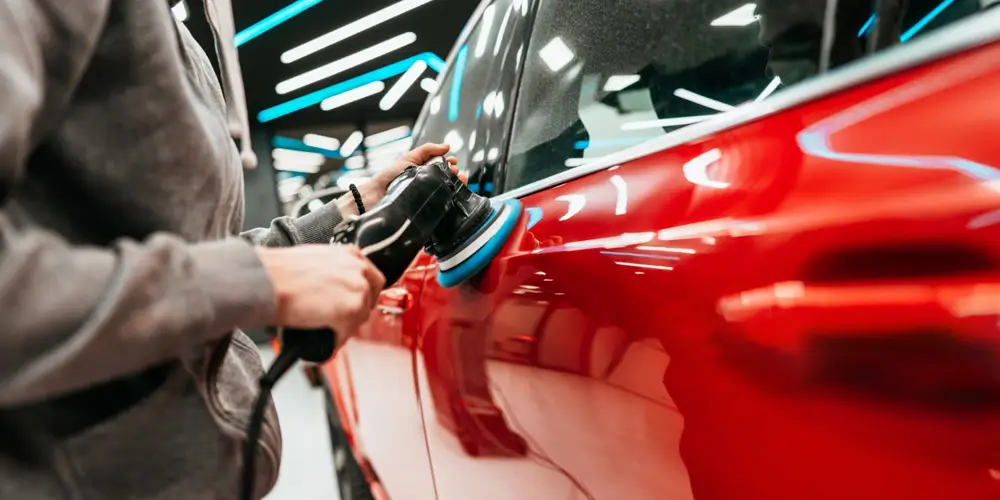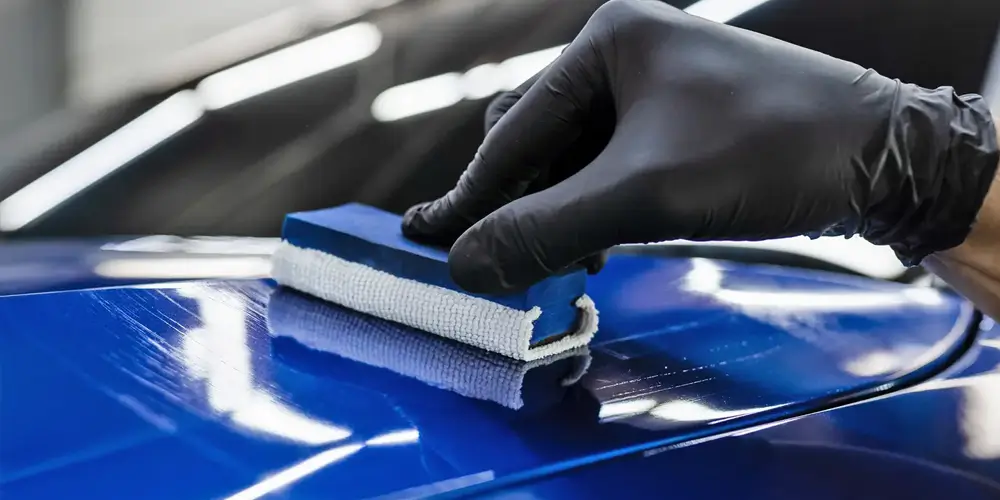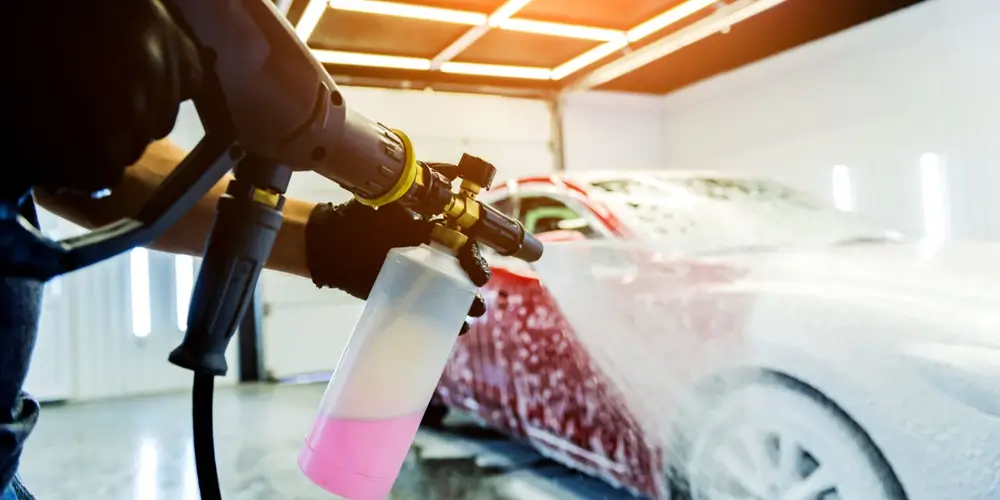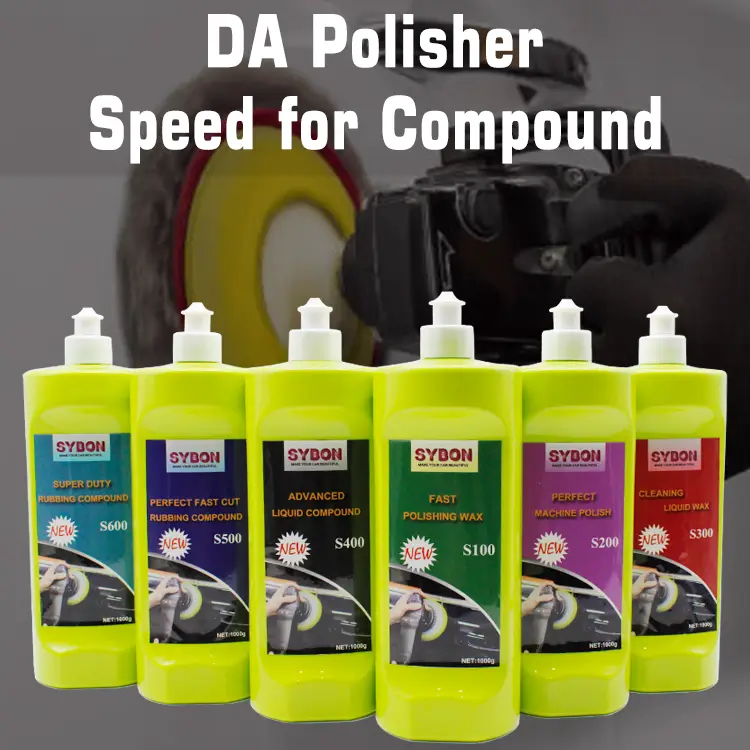DA Polisher Speed for Compound
In the world of auto detailing, achieving a flawless finish is both an art and a science. One of the critical factors in this process is the speed at which your dual action (DA) polisher operates, especially when compounding. At SYBON, your trusted One Stop Auto Detailing Supplier, we understand the nuances of this intricate process. Whether you're an import wholesaler, auto detailing shop owner, or automotive repair center manager, our goal is to provide you with the highest quality products and knowledge to enhance your business. If you’re interested in collaborating with us, please contact us through the form on our website.
Understanding the Role of DA Polisher Speed in Compounding
What is a DA Polisher?
A DA polisher, also known as a dual-action polisher, is a versatile tool used in the automotive detailing industry. Its unique motion combines rotation and oscillation, which minimizes the risk of paint damage and makes it user-friendly, even for beginners. This tool is essential for compounding, polishing, and finishing tasks, making it a staple in professional auto detailing shops and DIY enthusiasts' garages alike.
What is Compounding?
Compounding is the process of using abrasive compounds to remove defects from the vehicle's paintwork. These defects can include scratches, swirl marks, oxidation, and other imperfections. The goal of compounding is to restore the paint's clarity and prepare the surface for polishing and waxing.
The Importance of Speed in Compounding
The speed of a DA polisher is a crucial variable in the compounding process. It influences how effectively the compound breaks down and how quickly defects are removed. Using the correct speed ensures optimal results, reducing the risk of damage and saving time.
Optimal Speed Settings for Compounding
1. Low Speeds (1-2):
· Used for applying waxes, sealants, and finishing glazes.
· Ideal for delicate surfaces or final finishing steps.
· Not suitable for compounding as the abrasives won't break down effectively.
2. Medium Speeds (3-4):
· Suitable for light polishing and minor defect removal.
· Provides a balance between cutting power and safety.
· Can be used for compounding on softer paints or less severe defects.
3. High Speeds (5-6):
· Recommended for heavy compounding and defect removal.
· Maximizes the abrasive action of the compound.
· Requires careful handling to avoid overheating and paint damage.
How Speed Affects the Compounding Process
Abrasive Breakdown
At higher speeds, the heat and friction generated by the polisher help break down the abrasives in the compound more effectively. This results in faster defect removal and a smoother finish. However, excessive speed can also lead to increased heat, which may cause the paint to swell or even burn if not monitored carefully.
Heat Generation
Heat is both an ally and an adversary in the compounding process. Moderate heat aids in breaking down the compound and achieving a smooth finish. However, excessive heat can lead to paint damage, making it crucial to find the right balance. Using a DA polisher at the correct speed ensures that the heat generated is within a safe range.
Working Time
The speed of the polisher also affects the working time of the compound. Higher speeds reduce the working time as the compound breaks down faster. Detailers must adjust their technique to ensure even coverage and avoid overworking a particular area.
Choosing the Right DA Polisher for Compounding
When selecting a DA polisher, consider the following factors to ensure optimal performance during compounding:
Power and Torque
A powerful motor with sufficient torque is essential for maintaining consistent speed under load. This is particularly important during heavy compounding, where the resistance from the paint can cause lesser polishers to bog down.
Speed Control
Look for a DA polisher with variable speed control, allowing you to adjust the speed according to the task at hand. This feature provides the flexibility needed for different stages of the detailing process, from compounding to finishing.
Ergonomics
Comfort and ease of use are critical, especially during extended detailing sessions. A well-balanced, ergonomically designed polisher reduces fatigue and enhances precision.
Durability
Invest in a high-quality DA polisher that can withstand the rigors of professional use. Durable construction and reliable components ensure longevity and consistent performance.
Best Practices for Using a DA Polisher in Compounding
Pad Selection
Choosing the right pad is as important as selecting the correct speed. Compounding pads are typically more aggressive, designed to work with abrasive compounds to remove defects effectively. Common types include foam cutting pads, microfiber cutting pads, and wool pads.
Pad Maintenance
Regularly clean and maintain your pads to ensure optimal performance. Clogged or worn pads can reduce the effectiveness of the compounding process and increase the risk of paint damage.
Technique
· Pressure: Apply moderate pressure to allow the abrasives to work effectively. Excessive pressure can lead to uneven results and increased heat.
· Arm Speed: Move the polisher at a consistent, moderate pace. Moving too quickly can reduce the effectiveness of the compound, while moving too slowly can cause excessive heat buildup.
· Overlap: Use overlapping passes to ensure even coverage and avoid missed spots.
Monitoring and Adjusting
Continuously monitor the surface temperature and the condition of the paint. Adjust the speed and technique as needed to prevent overheating and achieve the desired results.
Benefits of Using the Correct DA Polisher Speed for Compounding
Improved Efficiency
Using the correct speed optimizes the compounding process, reducing the time needed to achieve a flawless finish. This efficiency is particularly beneficial in a professional setting where time is money.
Enhanced Results
The right speed ensures that the compound breaks down as intended, providing a smoother finish and better defect removal. This results in a higher quality final product that meets or exceeds customer expectations.
Reduced Risk of Damage
Using the correct speed minimizes the risk of paint damage, such as burns or swirl marks. This is especially important when working with delicate or high-end finishes.
Conclusion
In conclusion, the speed of your DA polisher plays a critical role in the compounding process. Understanding and utilizing the correct speed settings can significantly impact the efficiency, quality, and safety of your detailing work. At SYBON, we are dedicated to providing top-notch auto detailing supplies and expert advice to help you achieve the best possible results. Whether you're an import wholesaler, auto detailing shop owner, or automotive repair center manager, we invite you to collaborate with us. Please reach out through the form on our website, and let's work together to elevate your auto detailing business to new heights.
Source of this article:https://www.sybonbest.com
Get to know us through more channels:




